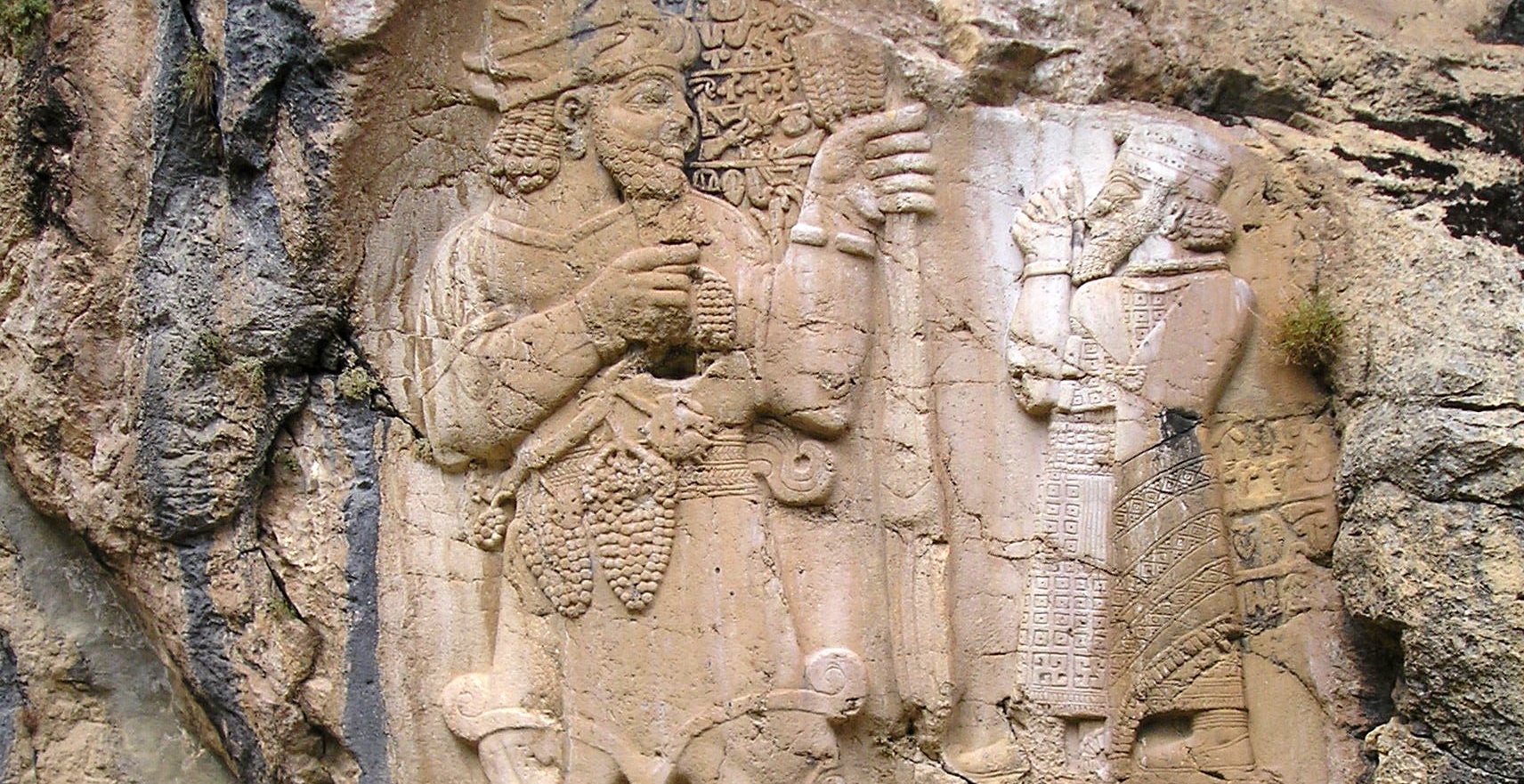


(Turkey’s Wild Grapes)
Some ten thousand years ago during the neolithic period, the first domesticated grapes were grown in the region now known as Turkey. No one is certain if fermented beverages were discovered by mistake or plan, but these grapes granted mankind the gift of wine. According to the Bible, Noah’s Ark settled on Mount Ararat in Eastern Turkey (Anatolia), where Noah harvested his first crop—the grape. To this day, these wild vines continue to flourish, and modern-day wineries transform Turkey’s ancient vines into enchanting wines.
(Wine of Gods & Royalty)
Although grapes were planted in Turkey 10,000 years ago, it was not until 3,000 years later that the creation of wine moved beyond the occasional lucky accident and became a craft of viticulture and winemaking. The oldest civilizations of Anatolia, the Hattis and the Hittites, used wine primary as a libation offered to the gods during rituals of royalty. Evidence proves that Hittite law protected viticulture, and it was tradition to celebrate each vintage with a holiday.
(Wine for All)
Over time, the Phrygians, who lived in Anatolia after the Hittites, incorporated wine as an essential part of their daily lives and diet. By 6th century BC, wine was exported as far as France and Italy. One of the early Anatolian grapes, Misket, became known as Muscat in Europe. Another variety from Smyrna (today’s Izmir) was used in the production of the famous wine of Pramnios, which is mentioned in Homer’s Iliad.
Wine production continued even after Islam began to dominate the region of Anatolia, and for the most part, a comfortable balance developed between Christian and Muslim residents: Christians produced the wine, even though both Christians and Muslims consumed it. Muslims patronized wine-bars in Christian neighborhoods, leading to sporadic intervals of alcohol prohibition; however, the prohibitions were always short-lived. Even during periods of prohibition, vineyards were never uprooted: grape production was simply diverted to other types of consumption. A ready supply of grapes enabled wine production to recover rapidly after each hiatus.
Because of the tolerance and freedom brought about by the Ottoman modernization movement during the second half of the 19th century, alcohol prohibitions ceased and wine production reached record levels. While Turkey was thriving, European vineyards were devastated by an epidemic of phylloxera (a vine-attacking louse), reducing wine production dramatically. In order to meet the resulting surge in European demand, the Ottoman Empire’s wine exports increased substantially, reaching 340 million liters in 1904.
There was a considerable amount of wine production before World War I and the War of Independence in Turkey. But wars affected production negatively, especially in the Thrace and Aegean regions.
The production of all alcoholic beverages went under the control of government monopoly in 1927, with the exception of wine, for which private production and the development of vineyards was still permitted. This was specifically done to develop and protect wine production. The only restriction, which in today’s terms could be called “controlled wine regions-appellation controllée”, was the permissions given to wine production on specific regions where wine grapes were being produced. In 1928 the government began to support wine producers with technical knowhow and semi-financial support.
M.Emile Bouffart was one of the first pioneering consultants who evaluated wines and the wine regions in Turkey, including advising on where to develop wineries.
In 1946 there were 28 small sized wineries all around Turkey exploring the potential quality of wine production with different varieties and terroirs under the Government Monopoly.
Marcel Biron was also one of the consultants working and identifying different wine regions and wines in Turkey (1937-1947). The 1950’s government initiated French grape varieties for plantation in the Aegean and Thrace regions (Semillon, Clairette, Sylvaner, Gamay, Cinsaut, Pinot Noir and Cabernet Sauvignon are among the varieties planted and explored during these dates).
The subsequent decrease in quality began with the non-implementation of this “controlled wine regions” regulation as well as political changes in the 1960’s. Private producers stayed in the market throughout this period, but remained relatively small in size.
By the late 1980s, as the Turkish economy began to integrate with other global economies and deregulation became more prevalent, the tourism sector also began to develop, thus substantially boosting wine sales. This was the impetus for the wineries to invest in the latest technology, machineries, to develop their wineries, begin investment in their vineyards and plant international and local grape varieties to international quality standards.
Turkey is the top fourth producer of grapes for wine making, by area planted (812,000 hectares = 2 million acres)
Turkey is the top six producer of grapes with 4.2 million metric tons.